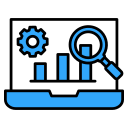Data Sources That Power Audit Insight
General ledger postings, subledger details, and bank transaction confirmations provide authoritative anchors. When reconciled and standardized, they let auditors trace completeness and accuracy across flows, validate cut-offs, and triangulate control exceptions with confidence and clarity.
Data Sources That Power Audit Insight
Supplier websites, shipping manifests, geolocation pings, macroeconomic indices, and even app store reviews can corroborate assertions. Blending external signals with internal records strengthens assertions around occurrence, existence, and valuation—while surfacing novel risks management might overlook.
Data Sources That Power Audit Insight
OCR, natural language processing, and entity extraction transform messy documents into analyzable fields. With defensible pipelines, auditors can detect policy violations, identify conflicting approvals, and spot suspicious language—without violating privacy or venturing beyond necessary scope.





